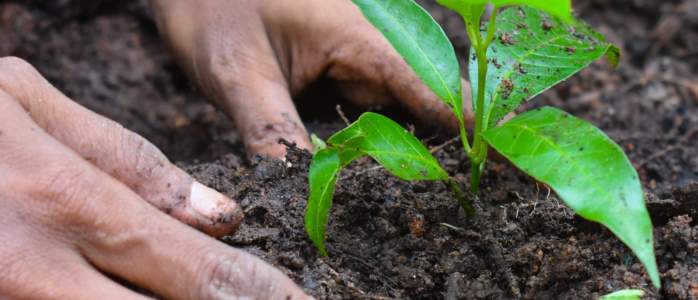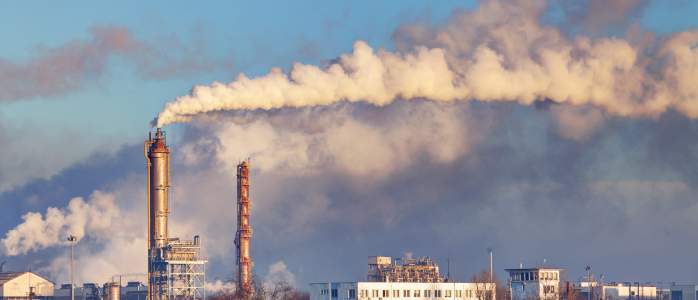



Land use and agriculture play a crucial role in mitigating or exacerbating greenhouse gas emissions depending on the way it is managed. India’s AFOLU sector (agriculture, forestry, and other land use) accounted for 17 per cent of anthropogenic greenhouse gas emissions in 2016, primarily through livestock population, agricultural soil, and rice cultivation. Moreover, land use and agriculture are linked to other economic sectors, such as energy, transportation, and industry – when things change in land use and agricultural practices, it impacts these sectors. So, to build resilience and have a sustainable future, India needs to focus on long-term AFOLU modelling, which will help it Identify effective land use practices to reduce greenhouse gas emissions and generate co-benefits for improved soil health, biodiversity, and carbon sequestration.
Integrated modelling approaches can simulate the interactions among different economic sectors and identify potential trade-offs and synergies between them to reduce greenhouse gas emissions. Modelling can help assess the impacts of land use changes on greenhouse gas emissions, food production, and energy demand, and identify policy interventions that can promote sustainable development across sectors. For climate action, then, there is a need to train India’s youth on climate modelling. To enhance the modelling capabilities of Indian researchers, the Council on Energy, Environment and Water (CEEW), in partnership with BITS Pilani KK Birla Goa campus, has launched a doctoral programme to train PhD students on AFOLU sector modelling. We are also building capacity at the state level by enhancing knowledge and operational capacity of the Global Change Analysis Model (GCAM) for candidates from the Indian Institute Of Management – Sambalpur (IIM-S) and the Indian Institute Of Engineering – Roorkee (IIT-R) to contribute to and inform India's climate actions.
An integrated approach and modelling are crucial for accurately assessing India's commitment to emissions reduction and combating global climate change.
India's land use has undergone significant changes due to population growth, urbanisation, agricultural expansion, and deforestation. These changes have led to a decline in agricultural land and an increase in urban and industrial land use, resulting in a loss of carbon storage and increased greenhouse gas (GHG) emissions. To combat these issues, India has made several commitments under the Paris Agreement and the Nationally Determined Contributions (NDCs), including creating an additional carbon sink of 2.5 to 3 billion tonnes of CO2 equivalent by increasing forest and tree cover. India is also committed to restoring 26 million hectares of degraded land by 2030 through the Bonn Challenge's Forest Landscape Restoration (FLR) programme. However, achieving these commitments requires addressing several gaps and challenges.
The precise land area required to achieve the additional carbon sink is not specified in the NDC target, and increasing forest cover by 33 per cent may not necessarily meet the carbon sequestration target. This is because the existing matured forest cover will sequester carbon at a very low rate, whereas the sequestration of the newly grown forest will depend on various factors such as the allocated land area per year, the type of trees to be planted, the density of planting, maturity age of the tree species, and the rate of growth. Additionally, if the additional land under forest comes from cropland areas, it could impact food production affecting the global supply and demand balance.
Furthermore, converting open natural ecosystems (ONE) into forests can lead to the loss of biodiversity, soil degradation, alteration of hydrological cycles, and an increase in the risk of wildfires. Land use change can also impact agricultural emissions produced by activities such as livestock production, fertiliser use, and crop cultivation. Therefore, an integrated approach that considers both the environmental and socio-economic factors is necessary to achieve a sustainable reduction in livestock population and emissions. Additionally, as the production of bioenergy crops (corn, sugarcane, oilseeds, etc.) is expected to increase to meet the future demand for energy, it is essential to understand the complex relationships and trade-offs between the energy, land use, and agriculture sectors to achieve a meaningful reduction in emissions. Evaluating land use transitions can ensure sustainable land use practices that balance economic development, social equity, and environmental protection in India. Integrating different types of data into a model can provide insights into the drivers of land use change and help understand the consequences of different land use decisions – before those decisions are made.
By focusing on these strategies, India can improve its AFOLU emissions modelling capacity and develop evidence-based policies to reduce greenhouse gas emissions from the sector. This can contribute to global efforts to combat climate change and strengthen our position as a leader in international cooperation on climate change.
Joy Rajbanshi is a Programme Associate at the Council on Energy, Environment and Water (CEEW), an independent, not-for-profit research organisation. Send comments to [email protected]






Add new comment